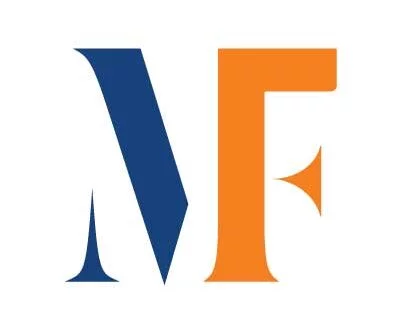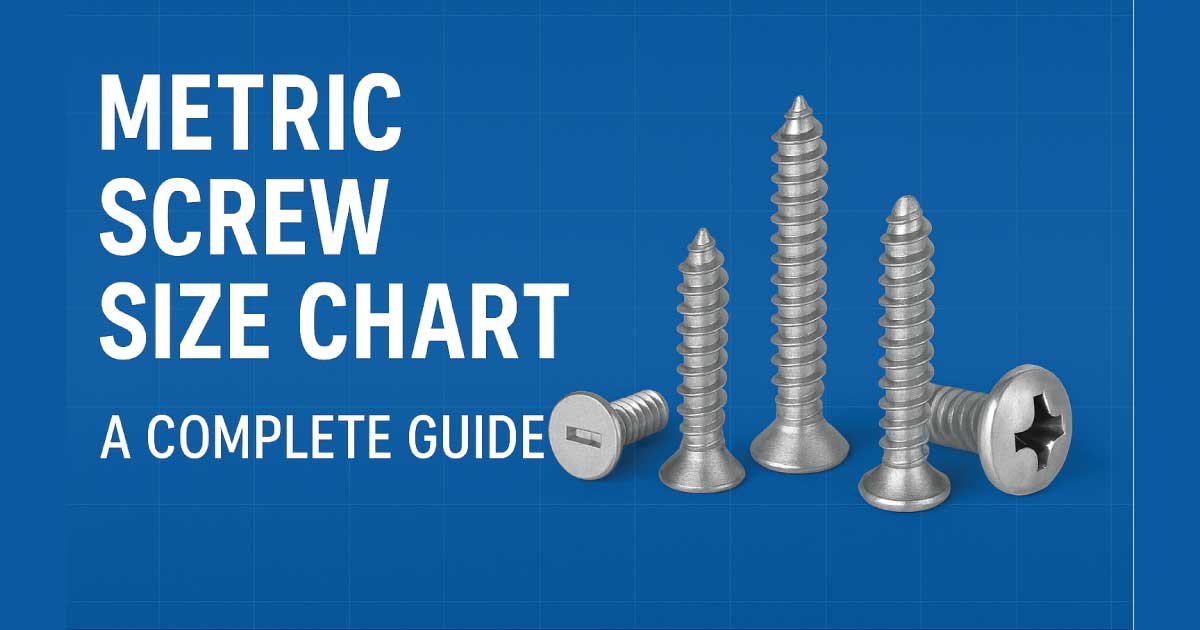Whether you are working on electronics, furniture assembly, automotive repairs, or industrial projects, screws are among the most widely used fasteners. Choosing the right screw size is crucial for strength, safety, and functionality. That’s where a metric screw size chart becomes essential.
This guide will walk you through everything you need to know about metric screw sizing, how to read charts, different applications, and provide a comprehensive metric screw size chart for quick reference.
What is a Metric Screw?
A metric screw is a type of fastener measured using the metric system (millimeters), rather than inches. The size of a metric screw is defined by three main factors:
Diameter (M): The outer width of the screw shaft in millimeters.
Pitch (P): The distance between threads, measured in millimeters.
Length (L): The distance from the head of the screw to its tip.
Example: M5 × 0.8 × 20 means:
M5 = 5 mm screw diameter
0.8 = thread pitch (distance between threads)
20 = length of screw in millimeters
If the pitch is not mentioned, it’s assumed to be the standard coarse pitch.
Why Use a Metric Screw Size Chart?
Even experienced professionals often rely on screw charts for accuracy. Here’s why:
Ensures compatibility with nuts, washers, and tapped holes.
Helps in identifying the correct diameter and length.
Prevents stripping or thread damage caused by mismatched sizes.
Saves time when working with multiple screw types in different projects.
Provides a standardized global reference, since metric screws follow ISO standards.
Key Terms in Screw Sizing
Before reading the chart, here are some important terms:
Major Diameter (d): The outer diameter of the screw threads.
Minor Diameter: The inner diameter between the thread valleys.
Pitch: Distance between threads.
Thread Angle: Metric screws have a 60° angle between thread flanks.
Coarse Thread: Standard default thread pitch.
Fine Thread: Smaller pitch, stronger hold, used in precision applications.
Common Metric Screw Sizes
Metric screws are standardized by the ISO (International Organization for Standardization), making them globally recognized.
Here’s a metric screw size chart for commonly used sizes:
Metric Screw Size Chart (Coarse Thread)
| Screw Size | Thread Pitch (mm) | Major Diameter (mm) | Typical Head Size (Hex/Socket) | Common Uses |
|---|---|---|---|---|
| M1.6 | 0.35 | 1.6 | 3.2 mm | Electronics, precision devices |
| M2 | 0.4 | 2.0 | 4.0 mm | Small appliances |
| M3 | 0.5 | 3.0 | 5.5 mm | Toys, gadgets, PCs |
| M4 | 0.7 | 4.0 | 7.0 mm | Furniture, bicycles |
| M5 | 0.8 | 5.0 | 8.0 mm | Automotive, DIY |
| M6 | 1.0 | 6.0 | 10.0 mm | Machinery, bikes |
| M8 | 1.25 | 8.0 | 13.0 mm | Automotive, construction |
| M10 | 1.5 | 10.0 | 17.0 mm | Engines, heavy duty |
| M12 | 1.75 | 12.0 | 19.0 mm | Structural steel |
| M16 | 2.0 | 16.0 | 24.0 mm | Automotive suspension |
| M20 | 2.5 | 20.0 | 30.0 mm | Industrial machinery |
| M24 | 3.0 | 24.0 | 36.0 mm | Construction, heavy equipment |
Fine Thread Metric Screws
Fine threads are stronger, resist loosening from vibration, and are used in precision engineering, automotive, and aerospace.
| Screw Size | Fine Pitch (mm) | Major Diameter (mm) |
|---|---|---|
| M6 | 0.75 | 6.0 |
| M8 | 1.0 | 8.0 |
| M10 | 1.25 | 10.0 |
| M12 | 1.5 | 12.0 |
| M16 | 1.5 / 2.0 | 16.0 |
| M20 | 1.5 / 2.0 | 20.0 |
How to Read Screw Sizes
Let’s take an example:
M8 × 1.25 × 40
M8 = Nominal diameter (8 mm)
1.25 = Thread pitch (distance between threads)
40 = Screw length in mm
If written simply as M8 × 40, it means M8 × 1.25 × 40 (coarse).
Metric Screws vs. Metric Bolts
Many people confuse screws and bolts. Here’s the difference:
Screws: Typically smaller, often driven directly into a material or threaded hole.
Bolts: Usually larger, requiring a nut or tapped hole to secure.
Key Difference: Bolts are designed for clamping, while screws often provide direct fastening.
The metric screw size chart helps for both, since the diameter and pitch rules apply similarly.
Metric Screw Head Types
Different screws use different head designs, and the chart often references head size:
Hex Head: Common for bolts and larger screws.
Socket Head (Allen): Used in machinery and bikes.
Phillips/Slotted Head: Found in electronics and household items.
Torx Head: High-torque, slip-resistant screws used in automotive.
Applications of Metric Screws
M1.6 – M3: Electronics, watches, laptops, toys.
M4 – M6: Furniture, appliances, bicycles, light machinery.
M8 – M12: Automotive engines, motorcycles, medium-duty machinery.
M16 – M24: Structural steel, bridges, heavy industrial equipment.
How to Use a Metric Screw Size Chart
Identify the diameter (M-size).
Check the thread pitch. If not given, assume coarse pitch.
Measure the screw length from the head to the tip.
Match the nut or tapped hole with the same diameter and pitch.
Choose the correct head type depending on your tool (hex, socket, Torx, etc.).
Common Mistakes to Avoid
Mixing imperial and metric screws – they look similar but are not interchangeable.
Ignoring thread pitch – even same-diameter screws can have different pitches.
Using wrong strength grades – weak screws may shear under load.
Forgetting washers – they distribute load and protect surfaces.
Printable Screw Size Charts
Many workshops and DIY enthusiasts keep a laminated screw size chart in their toolbox. Having one handy avoids confusion and ensures accurate selections.
If you work often with different fasteners, a digital PDF version is also useful for quick mobile reference.
Final Thoughts
A metric screw size chart is one of the most useful references for mechanics, engineers, builders, and even DIY enthusiasts. It helps in choosing the right diameter, pitch, and length for your project, ensuring strength, durability, and safety.
From tiny M1.6 screws in electronics to massive M24 screws in heavy construction, metric screws are everywhere. Understanding how to read the chart will save you time, money, and prevent costly mistakes.
So next time you’re working on a project, don’t guess—check the chart.
Discover our latest blog post:

